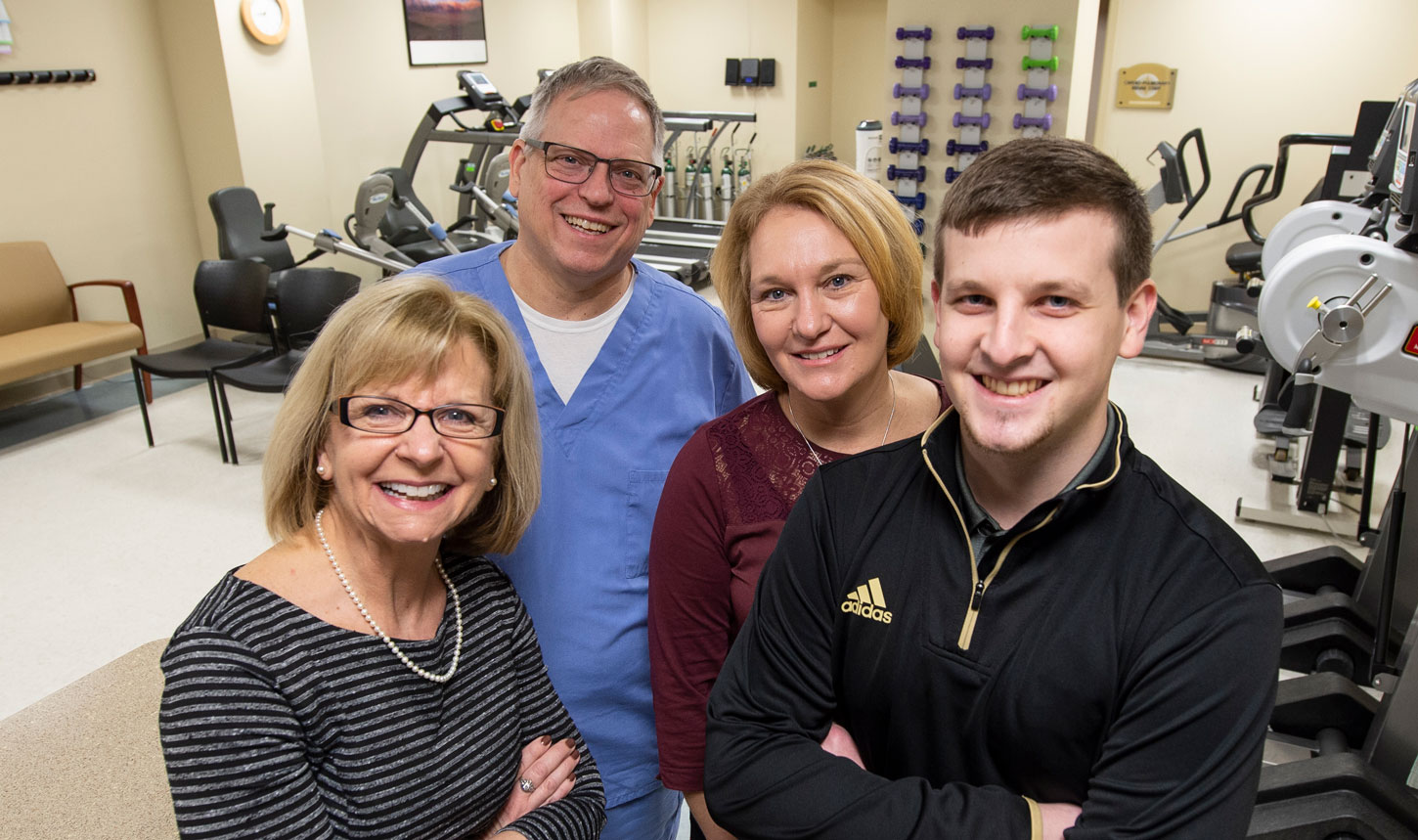09/27/2019
Cardiac Rehab & Pulmonary Rehab: Helping Reduce Future Health Risks
A patient who is recovering from a sudden cardiac event such as a heart attack, or a patient coping with chronic breathing issues often share the same overriding concern: how can I live longer and better, while reducing the risk of future health problems?
Addressing these concerns is why Collette Carville, RN, BSN, Cardiac and Pulmonary Rehab Program Supervisor at Wentworth-Douglass Hospital, finds her job so rewarding: “We take that element of fear, and help turn it into confidence for our patients – the confidence to return to daily activities, and the confidence to take control of their diagnosis.”
Carville supervises the Cardiac Rehab and Pulmonary Rehab Programs at Wentworth-Douglass. She says that the main difference between the two is that pulmonary conditions can involve a chronic disease, including lung issues ranging from COPD (Chronic Obstructive Pulmonary Disease) to lung cancer and lung cancer surgery. Cardiac rehab, on the other hand, is more likely to follow a specific event such as heart attack, angina, cardiac surgery, heart failure or heart transplantation.

These rehab programs share a dual focus on carefully monitored exercise and education. Both elements “are equally important,” according to Carville: “Our patients benefit from the combination of a structured exercise program monitored by nurses and our exercise physiologist, along with group education and support.”
For example, Pulmonary Rehab classes include topics such as stress reduction and breathing, nutrition, oxygen safety, inhaler safety, and smoking cessation. Patients can improve daily living with certain tools and techniques, learn to get around the house more easily, and maximize their lung function.
Cardiac Rehab classes cover basic heart anatomy, nutrition, exercise, medications, smoking cessation, and overall heart health. Teaching and instruction are based on American Heart Association guidelines.
“Our collaborative approach goes well beyond the walls of our gym, and extends throughout the entire hospital,” says Carville. “Our team includes pharmacists, nutritionists, and practitioners of integrative therapies – such as relaxation massage for stress reduction and circulation improvement. We, as a team, are able to say to patients, ‘We know you can do this.’ We surround our patients with reassurance. Ryan Page, our exercise physiologist, is there to encourage and guide, while our nurses assess activity tolerance and safety. There is constant medical monitoring of every patient’s heart rate and vital signs as they exercise throughout each rehab session.”
To help promote healthier lifestyles, a dietician is present once a week in the same room with patients, so that they can connect easily and communicate directly, without the need to make a separate appointment. Pulmonary rehab patients can improve endurance and muscle strength, decrease symptoms, and maintain healthy habits and behaviors, such as exercise, good nutrition, and smoking cessation. Cardiac rehab goals “can be a bit different,” according to Carville: “Our patients often want to get back to where they were before the heart attack or surgery. We focus on lowering their risk for a repeat event by focusing on factors the patient has control over, especially diet and exercise.”
Exercise has been proven to help control heart disease symptoms, such as chest pain or shortness of breath, stop or reverse damage to blood vessels in the heart, and improve stamina and strength. The Cardiac Rehab Program is certified by the American Association of Cardiovascular and Pulmonary Rehabilitation (AACVPR) which sets standards of care, staff competencies, and standardized protocols for reporting and measuring patient outcomes.
According to AACVPR, there is strong evidence of the benefits in participating in early outpatient rehabilitation, including reduced cardiac mortality, reduced cardiovascular events, and reduced readmission rates to the hospital. AACVPR statistics point to improved patient adherence with preventive medications, improved function and exercise capacity, and improved quality of life.
“Not that long ago, after any surgery, the thought was ‘don’t get out of bed,’” says Carville. “We now know that movement is better. There is so much well-documented evidence supporting exercise in general, and specifically to its positive impact on rehabilitation. Now physicians are our champions. Together with our patients, we can set goals that are realistic and attainable, and build confidence and a deep sense of well-being.”
For more information about the Cardiac or Pulmonary Rehab Programs, call Wentworth-Douglass Hospital Rehabilitation Services at (603) 740-2101.